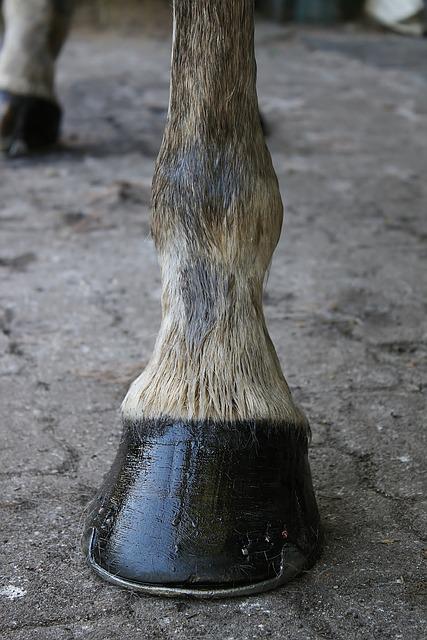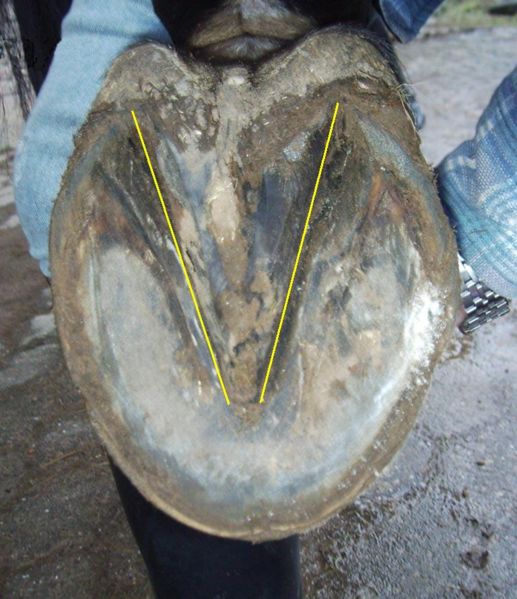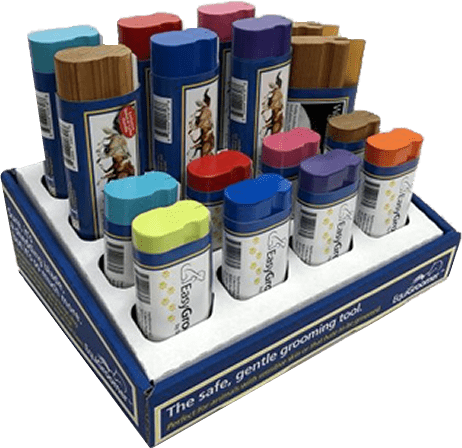Like with our feet, good foot health is crucial for enjoying an active and healthy life! From our posture to balance AND overall well-being, the state of our feet affects our whole body.
The same is true for your horse and its hooves.
When the foot is compromised, mobility and quality of life is acutely compromised. From foot, back, knee and joint stiffness, pain and weakness to poor posture, good foot health is imperative for mobile and pain-free life!
But how does this translate to horse hoof care? In a nutshell, regular hoof maintenance is non-negotiable! As the saying goes, “no foot, no horse.”
Why is Horse Hoof Maintenance SO Important?
Why Good Hoof Care Requires Regular Maintenance

Imagine if you never tended to your feet? Imagine if you didn’t cut your toenails for 12 months! Imagine if you neglected to wash and moisturize your feet. Then to top it off, imagine if you never wore shoes to protect your feet outdoors!
Now, imagine if you were talking about your horse’s hooves instead.
As Ben Franklin once said, “An ounce of prevention equals a pound of cure.” No matter what time of year it is, the regular maintenance of your equine’s hooves needs to be a priority!
Regular hoof maintenance helps ward off potential injuries and pain; but it also gives you the opportunity to address potential diseases and issues before they happen to keep your horse comfortable, healthy, sound and pain-free!
What regular maintenance of your horse’s hooves should involve? Keep reading.
Don’t Miss our Blog: “To Shoe or Not to Shoe Your Horse“
The 4 Horse Hoof Care Habits Your Horse Needs
To help your horse’s hooves remain healthy, strong and pain-free throughout the year, make the 4 habits below part of your horse’s regular hoof maintenance.

1. Regular Farrier Visits
Typically, it’s good to have your horse’s hooves trimmed every 4-6 weeks to prevent imbalance, cracks, wall separations and more. But double-check with your vet and/or farrier (an equine hoof-care professional) for your horse and their environment.
2. Moist and/or Damp Environments
Horses whose hooves are exposed to moisture or dampness for long periods of time are at risk of developing a bacterial (or less frequently, fungal) infection called thrush in the “frog” (the triangle of tissue in the hoof). Horses that live outside or stand in dirty (mud or manure) or urine-soaked stalls for long periods of time are at high risk for thrush.
SOLUTIONS:

Stall Cleaning: Clean stalls often to help prevent wet mud, urine or other debris from becoming trapped and packed around the hoof’s frog. Address all barn or stall moisture with proper ventilation.
Hoof Picking: Debris packed around the frog can cause both increased sensitivity and pain. It can also create the “perfect storm” for thrush. Clean hooves before and after riding and after bringing your horse in from the pasture. Also, use the opportunity to inspect overall hoof health.
Topical Spray: Since thrush infections are often difficult to get rid of completely, consider using a topical spray treatment to shield the hoof from moisture. Some thrush treatments can stain barn floors, so find a spray that is non-staining.

3. Multi-Use Hoof Dressings
Hydrating equine hoof dressings can help:
- Prevent dry/brittle hooves.
- Encourage healthy hoof growth.
- Protect the heel, sole, frog and coronary band.
- Reduce hoof maintenance.
4. Supplementation
Talk to your vet or farrier about adding a hoof supplement to your horse’s feed. Again, hoof issues are easier to prevent than repair! Look for a supplement that contains:
- Biotin.
- Zinc methionine.
- Lysine.
- Omega-3 fatty acids; and
- Calcium.
Remember, regardless of the time of year, always keep up on the regular maintenance of your horse’s hooves for their overall well-being and comfort!

Along with the regular maintenance of your horse’s hooves, regular grooming will also help support your horse’s overall well-being and comfort!
Our EquiGroomer tools are easy-to-use with no pulling, pain or damage to the coat.
We guarantee your horse will LOVE the EquiGroomer Grooming Tools!
For individual or bulk orders, call 860-573-0604 or click here to send us an email.

